Facility Overview
Greeting from our director
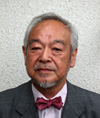 Climate and social history is reflected in the ideal of food, which forms the basis of our livelihood. To learn of food culture is to understand a region.
Climate and social history is reflected in the ideal of food, which forms the basis of our livelihood. To learn of food culture is to understand a region.In ancient times, Obama was the center of Miketsukuni that would present the harvest and salt of the seas to the Imperial Court. Afterward, it prospered as the departing point of the Saba Kaido for transporting seafood to the capital city, and as a base to the Sea of Japan, Obama was flourished in foods of all regions, which formed the high quality cuisine of the region.
Obama City is the first in the country to enact the "Food Urbanization Regulation." The institute at the center of this food urbanization is the Miketsukuni Wakasa Obama Food Culture Museum.
This food culture museum, the first of its kind in Japan, is a rendezvous point for citizens and people visiting Obama, and is expected to develop into an exchange center for the food of Japan.
Septmeber 2003 Miketsukuni Wakasa Obama Food Culture Museum Director
(Emeritus Professor at the National Museum of Ethnology)

(Emeritus Professor at the National Museum of Ethnology)
Facility Purpose of Food Culture Museum
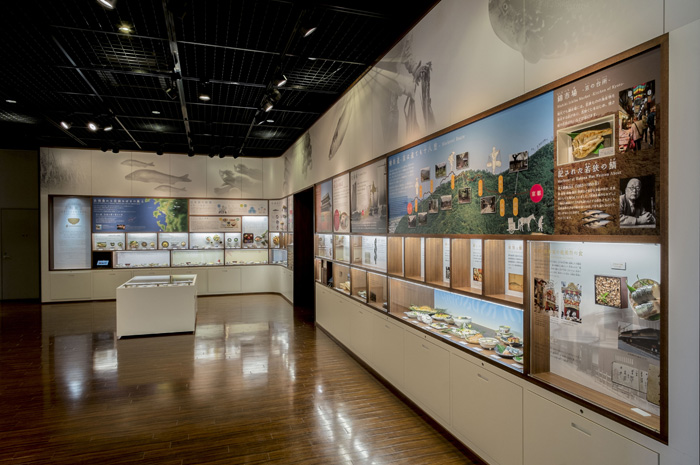 Miketsukuni refers to a country that in ancient times made offering of "gifts (Minie)" and "food (Mike)" (referring to food of the Emperor of Japan) to the Imperial Court.
Miketsukuni refers to a country that in ancient times made offering of "gifts (Minie)" and "food (Mike)" (referring to food of the Emperor of Japan) to the Imperial Court.Along with Ise, Shima, and Awaji being recited in the Manyoushuu (Japan's oldest anthology of poems) as Miketsukuni, Wakasa is recorded in The Engi-Shiki Code, complied in the Heian era, along with Shima as a state that made offering of "Mike," the Emperors food.
Tags attached to wooden tablets when sending "Minie" that were excavated from ruins of ancient Nara also show that Wakasa was a Miketsukuni. As a Miketsukuni that has offered salts and marine products since long ago, Wakasa has played an important role in history up to now.
Today and even in the past, Wakasa Obama (Obama City) has water produced by its abundant forests, fruits of the sea raised by the beauty of nature, and has the most delicious water, fish and vegetables blessed by the fruits of its lands.Shining a light on its boastful history of food and ingredients, Obama City formulated the "Food Urbanization Regulations" and began "Food Urbanization."
More specifically, we promote not only "food" by its confined meaning, but a "Food Urbanization" that stretches across a broad field, such as the promotion of agriculture, forestry, and fisheries that choose only the best ingredients, a food industry that supports food culture and the promotion of the chopsticks industry, guesthouses that serve only the best food and help the tourism industry flourish, self-sufficiency for food in regions, contributions to health, environmental conservation of forests, water, lakes, and seas that grow food, and child education that gives hands-on learning for making food.We dream that all tourists, from citizens to businessmen, will take it upon themselves to participate in this "Food Urbanization," understand one another, and work together in building this city.
Introduction of each floor
Museum Building
| 1F | 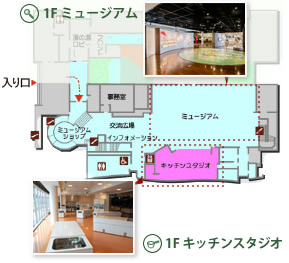 |
|
| 2F | 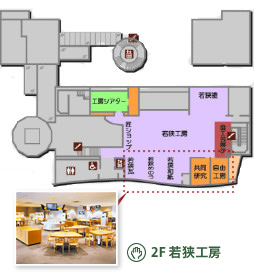 |
|
Hama Hot Springs Building
| 1F | 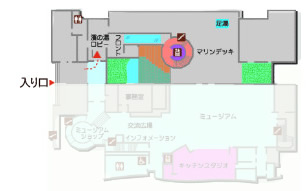
|
|
| 3F | 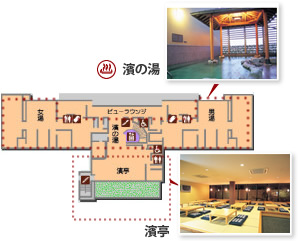
|
|
Annex "Hama Four Seasons"
Details here >>Hama Four Seasons site
Universal Design
The Miketsukuni Wakasa Obama Food Culture Museum gives tours for anybody, touching on the history and culture of Wakasa while also taking into numerous considerations for the "Urban Development Regulations of Fukui Prefecture Social Services," so that you may get an interactive experience.
Braille and Signs Guide
All entrances, exits and stairs have Braille signs set up, along with Braille displayed on all elevator buttons and handrails that guide you around the museum.
 |
 |
Wheelchairs
Slopes
In order for senior citizen and handicapped guests to move around with the least amount of trouble, we have set up as many slopes as possible.
We also have handrails on our walls.
We also have handrails on our walls.
 |
 |
Multipurpose Toilets
We have one area for our easy-to-use multipurpose toilets for handicapped and people with children on each floor.
The sliding door entrances will lead you to a toilet with bidet, handrail, and baby seat with a wide toilet.
The sliding door entrances will lead you to a toilet with bidet, handrail, and baby seat with a wide toilet.
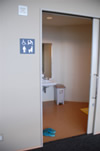 |
 |
Elevator
We have an elevator for those with visual impairment or wheelchairs. Each is equipped with handrails that are easy to grip.
Elevator button with Braille
 |
Universal design with a sense of color
We use a universal design that takes into consideration color perception for commentary graphics and itemized signs in our museum.
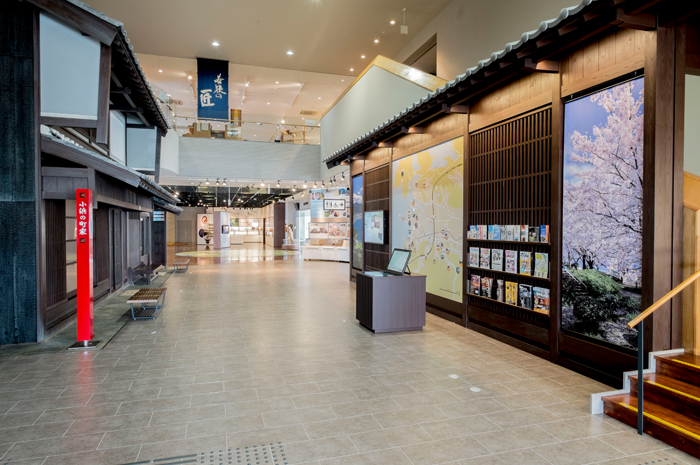 |












